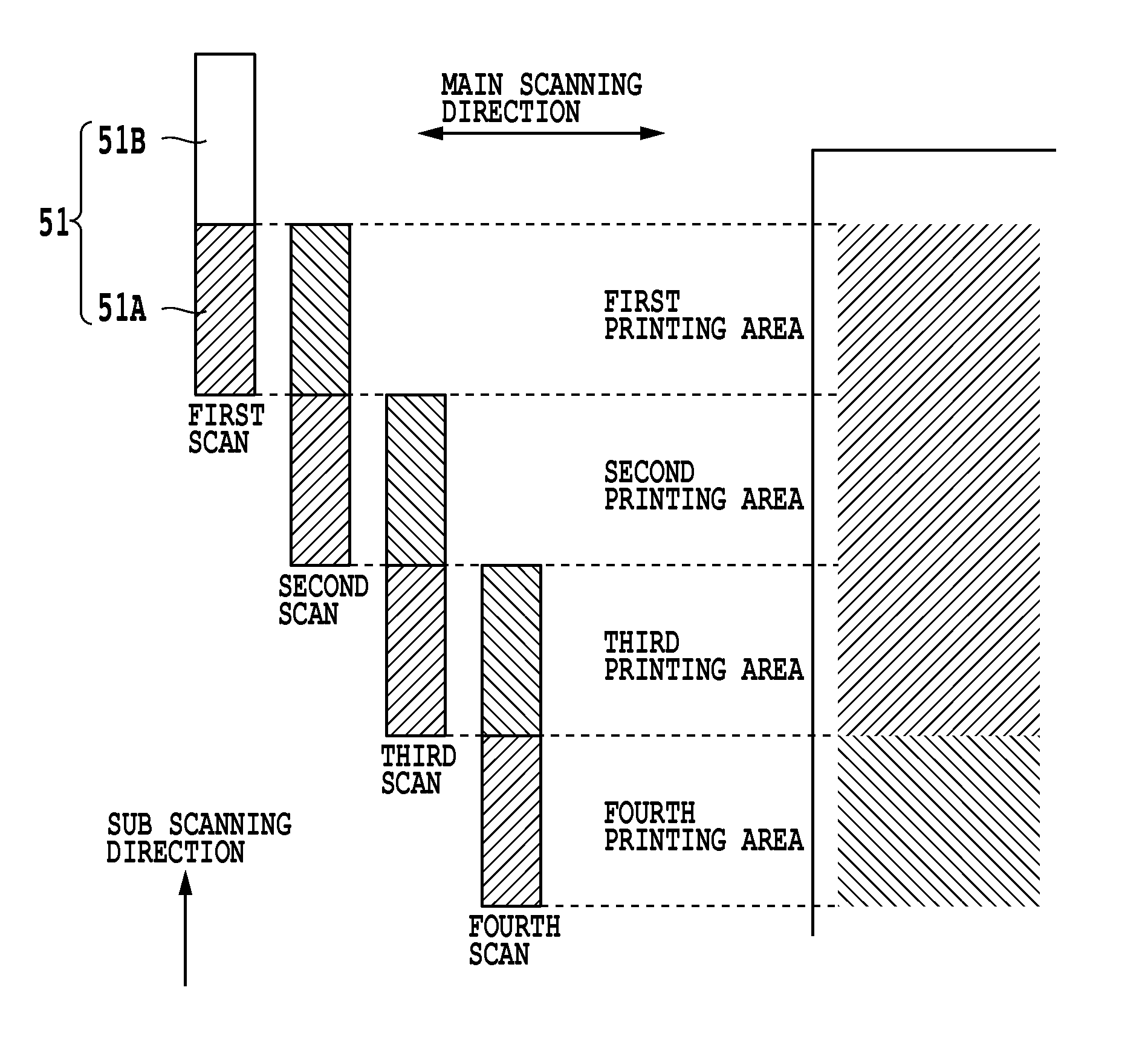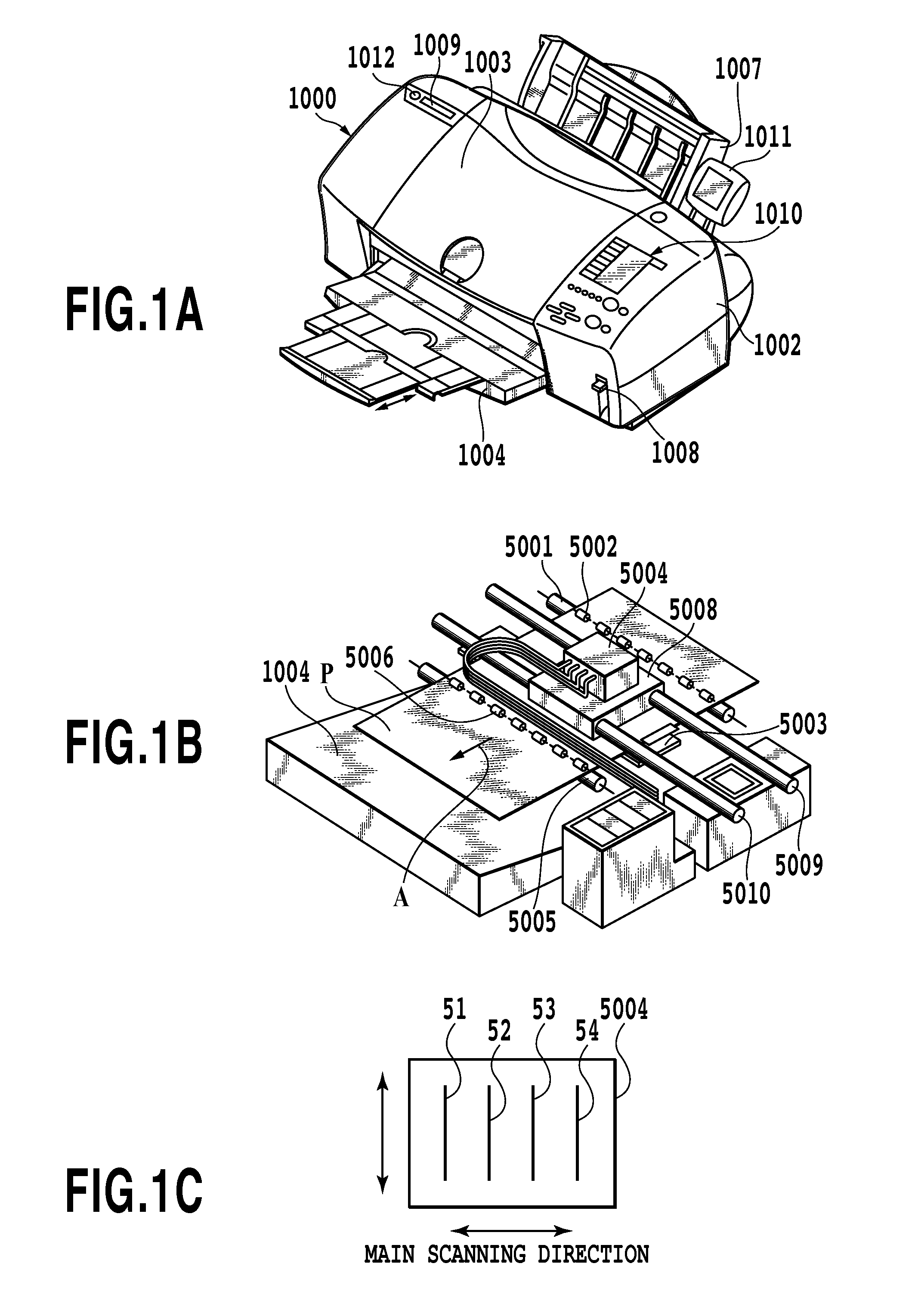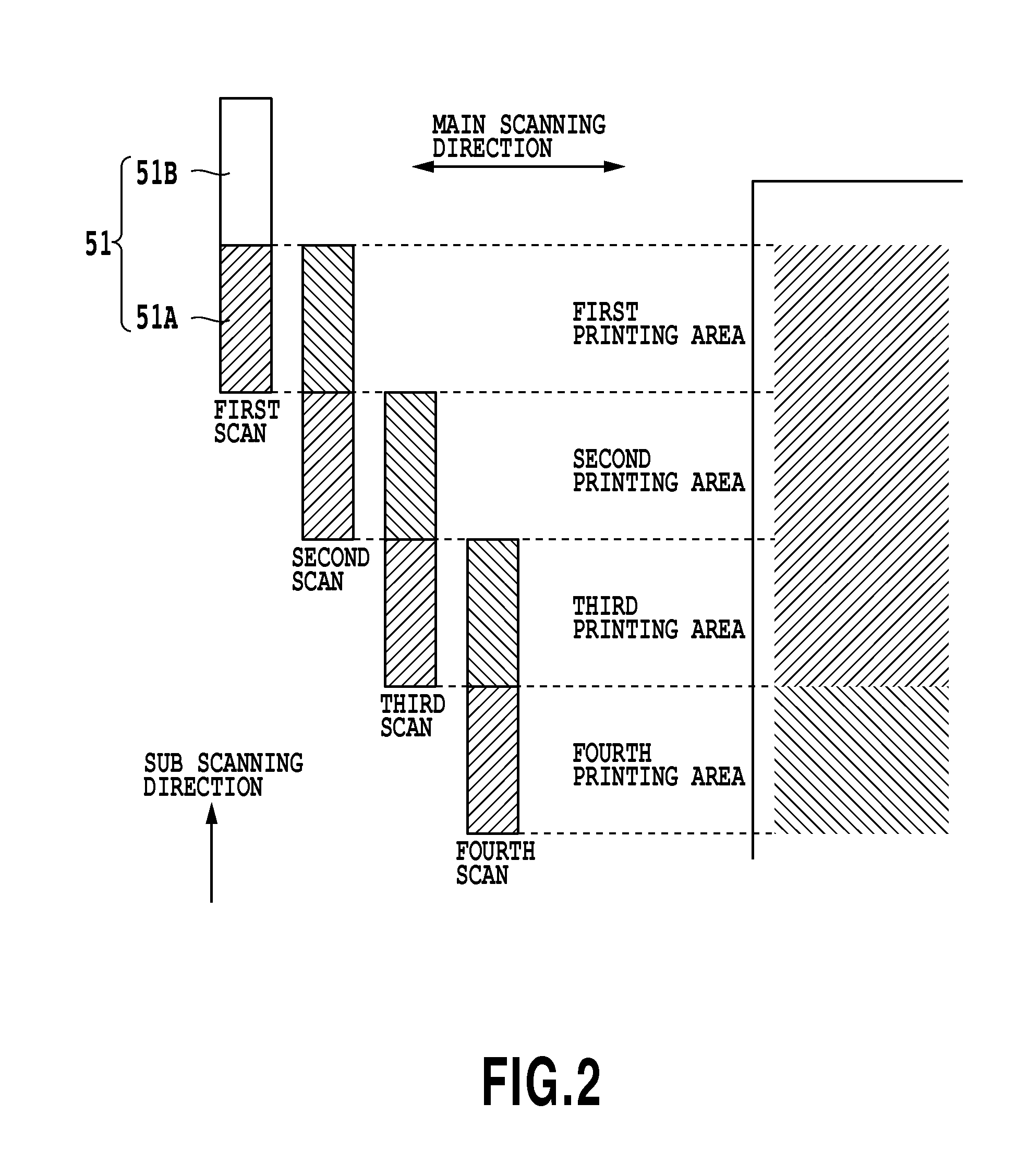Image processing apparatus and image processing method
a technology of image processing and image processing, applied in the field of image processing apparatus and image processing method, can solve the problems of image defects, fluctuation of dot coverage, and shift of dot printing position between plurality printing scans, and achieve the effect of decreasing the density unevenness and graininess
- Summary
- Abstract
- Description
- Claims
- Application Information
AI Technical Summary
Benefits of technology
Problems solved by technology
Method used
Image
Examples
first embodiment
[0055]A first embodiment of the present invention relates to a data generation mode which when dividing multi-valued data to generate multi-valued data for the multi-pass printing of two-pass that is described above referring to FIG. 2, generates divided multi-valued data that is common for two passes as well as divided multi-valued data for each of the two-pass. In addition, the data generation mode of this embodiment reflects the quantized data of the common multi-valued data on quantized data for each pass. Furthermore, the data generation of the present invention determines a division ratio for dividing the multi-valued data according to color used in printing, specifically, types of ink used in printing.
[0056]FIGS. 4A and 4B are block diagrams showing a system for performing a process (image processing) for generating printing data for the two-pass printing, according to this embodiment. The multi-valued image data input section 401, color conversion processing section 402, col...
second embodiment
[0095]A second embodiment of the present invention is related to a mode of determining whether or not to perform the division illustrated in FIGS. 4A and 4B of the first embodiment, according to the colors used in printing.
[0096]In the pass division that was explained in the first embodiment, there is a tendency for the processing load and amount of memory used to increase when compared with conventional processing in which normal quantization is performed after which data is divided into data for each scan using masks. A reason for the increase in processing load is the dividing process (first division process) of data into three that are first-scan multi-valued data, second-scan multi-valued data and first-scan and second-scan common multi-valued data. Moreover, another reason is the quantization process (second quantization process) of the respective divided three multi-valued data, and combining (combination process) the lowered gradation results of first-scan and second-scan co...
third embodiment
[0101]A third embodiment of the present invention relates to a mode in which when the printing duty that relates to a ratio of dots to be printed is high, division ratios are used so that in the same scan dots of the same color of ink are not printed. Moreover, for low duty, the processing of the first embodiment or the second embodiment explained above is performed, and density unevenness due to printing displacement is suitably reduced.
[0102]FIG. 11A is a view explaining permeation of inks into the printing medium when pigment Kink and dye Y ink are applied adjacent to each other on the printing medium in the same scan. FIG. 11B is a view explaining permeation of inks into the printing medium when pigment K ink and dye Y ink are applied adjacent to each other on the printing medium in different scans. Here, the magnitude relationship of the permeation speed of permeation into the printing medium of each ink is the relationship of pigment K ink<dye Y ink. In addition, in both of th...
PUM
 Login to View More
Login to View More Abstract
Description
Claims
Application Information
 Login to View More
Login to View More - R&D
- Intellectual Property
- Life Sciences
- Materials
- Tech Scout
- Unparalleled Data Quality
- Higher Quality Content
- 60% Fewer Hallucinations
Browse by: Latest US Patents, China's latest patents, Technical Efficacy Thesaurus, Application Domain, Technology Topic, Popular Technical Reports.
© 2025 PatSnap. All rights reserved.Legal|Privacy policy|Modern Slavery Act Transparency Statement|Sitemap|About US| Contact US: help@patsnap.com



